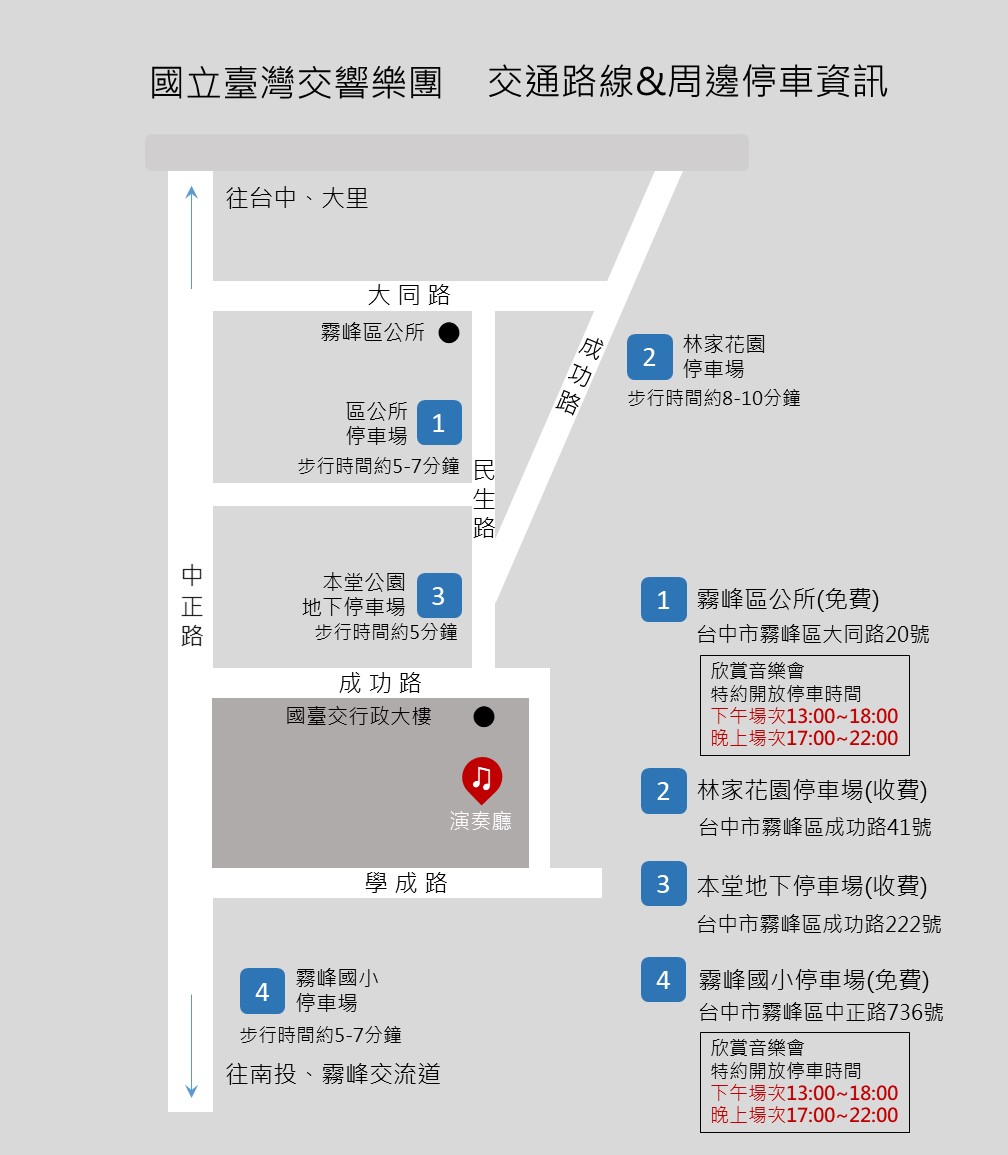| 場次 | 場地 | 音樂家 |
|---|---|---|
| 2023/06/03(六)19:30國立臺灣交響樂團演奏廳 |
|
王昱尹 Yu-Yin Wang
盧卡斯.金紐薩斯 Lukas Geniušas |
| 2023/06/04(日)14:30苗北藝文中心演藝廳 |
|
王昱尹 Yu-Yin Wang
盧卡斯.金紐薩斯 Lukas Geniušas |
預計2023/02/17啟售,首5日(02/17-02/21)NTSO 2022/23 VIP限定,02/22全面啟售。*成為NTSO VIP請點擊了解詳情
2023/03/08前「15選6限時6折套票」、「霧峰6折套票」優惠請點擊詳閱說明*100元票價不再折扣
★「成雙」套票:同場次一次訂購2張,第2張半價(須同票價)
★NTSO逢9限定:每月9日、19日、29日購票享79折。
★NTSO 2022/23 VIP:鑽石卡享7折,金卡享8折。

新銳拉赫曼尼諾夫—盧卡斯‧金紐薩斯與國臺交
Rising Star of Rachmaninoff - Lukas Geniušas & NTSO
2023/06/03(六)19:30 國立臺灣交響樂團演奏廳(臺中市霧峰區中正路738-2號)
2023/06/03(Sat.)19:30 NTSO Concert Hall
*停車資訊
2023/06/04(日)14:30 苗北藝文中心演藝廳(苗栗縣竹南鎮公園路206號)
2023/06/04(Sun.)14:30 Miaobei Art Center
音樂會前導聆|於音樂會演出前1小時由羅文秀主講,憑當天音樂會門票入場參加(由夜鶯基金會合作提供)
鋼琴/盧卡斯‧金紐薩斯
Piano: Lukas Geniušas
【曲目】Program
德弗札克:《阿米達》序曲
A. Dvořák: Overture to “Armida”
拉赫曼尼諾夫:升F小調第一號鋼琴協奏曲
S. Rachmaninoff: Piano Concerto No. 1 in F-sharp minor, Op. 1
巴爾托克:管弦樂協奏曲
B. Bartók: Concerto for Orchestra, Sz. 116
【節目長度參考】約100分(含中場休息)
*以上演出內容或順序等若有異動,以實際演出為準。
【票價】
臺中場 NT 300、500、800、1000
苗北場 NT 300、500、800
*歡迎大量購票(30張以上),專案優惠請洽主辦單位(04)23391141分機153,ntso153@ntso.gov.tw
指導單位:文化部
主辦、演出單位:國立臺灣交響樂團
音樂欣賞推廣協力:臺灣證券交易所
購票請洽OPENTIX兩廳院文化生活
各項優惠請點擊詳閱說明
成為NTSO 2022/23 VIP(請點擊)
活動洽詢電話:國立臺灣交響樂團04-23391141(代表號)
NTSO YouTube (超過760萬瀏覽次數)
NTSO線上音樂廳
NTSO《樂覽》雜誌
NTSO照亮古典
NTSO國立臺灣交響樂團LINE官方帳號
更多國臺交精彩畫面及音樂會訊息,請造訪國臺交Facebook粉絲專頁
拉赫曼尼諾夫寫了四首鋼琴協奏曲,如果再加上為鋼琴與管弦樂團的《帕格尼尼主題狂想曲》,五首作品問世的時間從1891年到1934年,平均十年一首,從中相當程度反映了作曲家的狀態。以第一號鋼琴協奏曲來說,創作此曲的拉赫曼尼諾夫還在學校念書,不到二十歲,能在創作上交出如此成績,已經讓人驚嘆。雖然此曲有著葛利格、柴科夫斯基鋼琴協奏曲的影子,但是拉赫曼尼諾夫的個人風格、滿載情感的旋律、收放自如的鋼琴,在此已經非常清楚了。
擔任獨奏的盧卡斯‧金紐薩斯是俄羅斯-立陶宛的年輕鋼琴家,2008年畢業於莫斯科蕭邦音樂學院。他曾獲多個國際比賽獎項,包含2015年柴科夫斯基大賽以及 2010年國際蕭邦大賽銀牌獎。
值得一提的是,德弗札克的《阿米達》與拉赫曼尼諾夫的第一號鋼琴協奏曲都是寫於二十世紀初,一位是卓然有成的大師,一位是初出茅廬的新秀。不過,德弗札克在《阿米達》也在做新的嘗試。這是他最後一齣歌劇,取材自十六世紀義大利詩人塔索的作品,處理基督教與伊斯蘭教的衝突。也因為作品的史詩性質,德弗札克善用的斯拉夫風格並無用武之地,改走華格納的路數。
而巴爾托克完成於二十世紀中葉的管弦樂協奏曲,曲風現代,無可置疑,但是結構有著古典的嚴謹,又運用了匈牙利民間音樂的素材,更增添了這場音樂會的東歐風味。(撰文/吳家恆)
Rachmaninoff’s four piano concertos (or five, if Rhapsody on a Theme of Paganini for piano and orchestra is also included) were all written between 1891 and 1934. On average, he delivered one composition every decade and the composer’s evolution of styles is reflected in the works. Rachmaninoff was still in school when he wrote his Piano Concerto No. 1, and it is impressive that he could write such a piece before he was even twenty. Although traces of Grieg and Tchaikovsky can be found in this concerto, it still clearly shows Rachmaninoff’s personal style which features emotional melodies and skillful piano techniques.
Lukas Geniušas is a young Russian-Lithuanian pianist who graduated from the Chopin Music College Moscow, in 2008. He is the laureate of several prestigious international competitions, notably Silver Medalist at the 2015 Tchaikovsky Competition in Moscow and at the 2010 International Chopin competition.
Interestingly, Dvořák's Armida and Rachmaninoff’s Piano Concerto No. 1 in F-sharp minor were both completed in the early 20th century. One was an accomplished master while the other was a rising young star. Although Armida was Dvořák’s final opera, the master was still trying out new things. Inspiration for Armida came from the works of 16th-century Italian poet Tasso which talked about the conflicts between Christians and Muslims. Due to the epic nature of this composition, Dvořák chose to use Wagner’s style instead of his usual Slavic method.
The Concerto for Orchestra Bartók completed in the mid-20th century has an undoubtedly modern polish as well as the rigorous structure of the classics. He also added Hungarian folk music elements to give the composition more Eastern European flair.
更新日期2023.4.26


